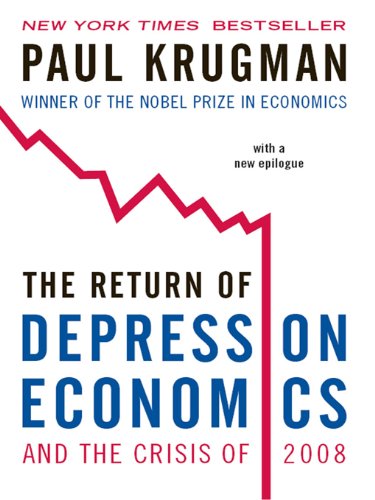The Green New Deal: Why the Fossil Fuel Civilization Will Collapse by 2028, and the Bold Economic Plan to Save Life on Earth, Jeremy Rifkin, St.Martin’s Press, 2019, pp. 290, ISBN 978-1-25-25320-0
‘The Green New Deal’ – the phrase on every politician’s lips in the West – has come to signify one’s commitment to environmental protection. In the United States, it is associated with a policy document introduced by Congresswoman Alexandra Ocasio-Cortez in the House, and Senator Ed Markey in the Senate. Although the resolution failed in the Senate, with no Democratic Senators voting in favour in protest of Mitch McConnell’s call for it to be voted on early, it remains a prominent feature in the Democratic Presidential race, with all the candidates either endorsing the document or pledging to support a green transition with ever more investment.
The concept could be officially traced back to the publication of a report entitled A Green New Deal, by the New Deal Group and the New Economics Foundation in Europe, which called for the restructuring of economic incentives to jumpstart a transition to a green economy and government investment in energy efficiency and microgeneration. The paper also recommended that large banks be broken up into smaller units and commit to green banking, which is a type of banking concerned with the social and environmental impacts of its operations. This transition would, the report claimed, create thousands of new, well-paying green jobs.
However, ecosocialists had called for a version of a Green New Deal long before it lodged itself onto everyone’s lips. Their analysis of the growth-oriented capitalist production and its destructive impact on the environment has its roots in the works of Andre Gorz, Martin O’Connor, and John Bellamy Foster, among others. They maintained that to create an ecological society, a socio-ecological revolution would be necessary to fundamentally restructure our economy. John Bellamy Foster, for example, relied on Marx’s early works to develop a concept of the ‘metabolic rift,’ which describes the relationship between the socio-economic structure of societies and the biophysical world-system. According to his theory, the problems leading to environmental crises are a direct product of how we organize our societies. Capitalism, by its very structure, requires perpetual growth, fueled by natural resources, whose exhaustion leads to a creation of an irreparable rift between societies and nature. He was writing in the late ‘90s.
The analysis of ecosocialists could, therefore, pose a benchmark against which we can analyze all proposals for the creation of an ecological society. We can evaluate them by posing a simple question: to what extent does it transform our economy?
Jeremy Rifkin’s The Green New Deal is a growth-oriented work of market optimism. He claims that we are at the cusp of entering a zero-carbon economy, brought about by technological innovation and a significant decrease in the costs of production of green energy, such as solar and wind power. Continuing where he stopped with the publication of his 2011 book The Third Industrial Revolution in which he claimed that each industrial revolution we’ve experienced so far revolved around the coalescence of ‘general-purpose technology’ that fundamentally changes the infrastructure of how we power the economy. While the previous two have been powered by fossil fuels and telephony, the third, which we are experiencing now, will revolve around 5G communications, a renewable energy Internet, and a digitized mobility and logistics platform. Sensors embedded in our daily lives have worked with the broadband infrastructure to power and move the supply chain more efficiently. Four sectors represent the harbingers of our greener future: ICT/telecommunications, energy and electricity, internal combustion mobility and logistics, and the residential, commercial, industrial and institutional building stock. Coupled with a decreasing price of renewable energy, these developments will inevitably lead to “around $100 trillion of assets” within the fossil fuel industry to be ‘carbon stranded.’ According to Rifkin, everything suggests that “the collapse of the fossil fuel industrial civilization could occur sometime between 2023 and 2030”.
Rifkin claims that a new techno-social bond will provide the bedrock for green infrastructure. Currently, the deterioration of the nation’s infrastructure costs the US GDP trillions of dollars and millions of jobs. The infrastructure revolution that the US needs will require “deep public participation” in what Rifkin calls “laterally scaled infrastructure deployment.” There needs to be a move away from “a decider in chief” to a “facilitator,” which would allow infrastructure roll outs to be deployed quicker. This infrastructure development will be crucial in developing a network to be used by “glocalized” communities in the “creation of smart high-tech small and medium-sized enterprises blockchained into laterally extended cooperatives operating in networks circling the world.” In other words, new roads, plugged into the Internet of Things, will facilitate the increase in global trade.
However, what Rifkin fails to acknowledge is that cement, necessary for the construction of roads, currently does not have a biological and sustainable alternative. If the cement industry were a country, a Chatham House report informs us, it would be the third-largest emitter of greenhouse gasses in the world. It is currently responsible for 8% of the total world carbon dioxide emissions. In order to meet the requirements of the Paris Agreement, annual emissions from cement will need to fall by 16% by 2030. China, praised by Rifkin for its commitment to renewable energy, is the world’s highest producer of cement, and therefore responsible for most emissions. Moreover, the creation of new roads would come from the budget of local governments, which would act as a subsidy for businesses, as these would be used to increase private profits. In essence, public money should facilitate private profits in Rifkin’s version of a green future.
To supply energy, Rifkin suggests the creation of a ‘renewable energy Internet,’ where consumers would simultaneously be producers and consumers, plugged into a smart grid that would allow them to share excess electricity and contribute to those who need it at that moment. The energy flowing through this grid would come from the Sun or the wind. As Rifkin states, the initial costs required in setting up the panels or the turbines are the only cost that the producer/consumer will need to incur. Subsequently, there will be virtually no marginal cost to their production. In 2011, the Electric Power Research Institute stated that the creation of such a grid in the US would cost upwards of $476 billion over twenty years, but would, in turn, generate between $1.3 and $2 trillion in economic benefits. Rifkin, however, fails to mention for whom.
Rifkin fails to mention that the extractive industry is heavily involved in the production of minerals required for electric appliances. To meet the demands of an ever-growing economy reliant upon the production of green energy, ever more rare and non-renewable minerals will need to be mined. For example, solar panels rely on indium; turbines use neodymium; batteries use lithium. In constructing the generators, steel, silver and copper are used. With mining operation comes environmental degradation that usually affects poor and marginalized communities and their livelihood, with their water sources being contaminated and their agricultural lands turned infertile. Moreover, heavy reliance on minerals might spark a global resource war. Just this month, Evo Morales was deposed in a military coup, a week after he decided to walk away from a lithium extraction and processing project with a German corporation.
Rifkin also acknowledges that a transition to a green economy will require massive amounts of money. By his calculation, “the federal government’s initial ten-year infrastructure plan would amount to $115 billion per year,” with the total ten-year cost amounting to $1.15 trillion. This, as Rifkin states, would provide the “bare-bones” and that “significant additional dollars will be required.” The burden is primarily going to fall on states, counties, and municipalities. A way to fund the transition could partially come from a massive divestment campaign, which would see financial institutions divest from fossil capital and invest in green renewable energy. Pension funds will play a major role, given their role as the largest pool of investment capital, valued at $41.3 trillion in 2017. Rifkin sees divestment as the rational response to the inevitable collapse of the industrial fossil fuel civilization and the possibility of having trillions in stranded assets. However, petrostates and large fossil fuel corporations are not going to give up easily. For example, Exxon, which is being sued for having misled its investors over climate change, has donated millions to politicians denying climate change and funded think tanks seeking to dispute science. Despite their pledges, fossil fuel companies have increased their harmful operations. Rifkin fails to acknowledge the infrastructure and political power that coalesces around fossil fuel companies that enable them to pursue their profits at the expense of the environment.
Lastly, Rifkin is the President of the Foundation on Economic Trends and TIR Consulting Group LLC, as well as an adviser to the European Union and China, which he uses as role models for a possible transition in the US. Throughout the book, Rifkin advertises his services, connecting the work of TIR with successful strategies for the change needed. He credits his book The Third Industrial Revolution as having inspired many a leader to seek him out to help. Li Henjun, the founder of Henergy, the company that leads the market in the production of thin-film solar power technologies, was apparently so moved by Rifkin’s book that he invited him over to China to help galvanize support for the leadership’s initiatives. It comes across as disingenuous and self-serving, especially when the pleas are made to humans as ‘species’ to come together. It also leads Rifkin to ignore a lot of shortcomings of the alleged role models themselves.
Jeremy Rifkin’s The Green New Deal is useful in understanding the business community’s case for a Green New Deal, as well as realizing its pitfalls. It is only by realizing that pro-growth market-oriented strategies that seek to restructure economies within the confines imposed by capitalism are bound to lead to more destruction, both environmental and social, that we can understand that ecosocialism is the only initiative that paves the way to a brighter and more sustainable future.




